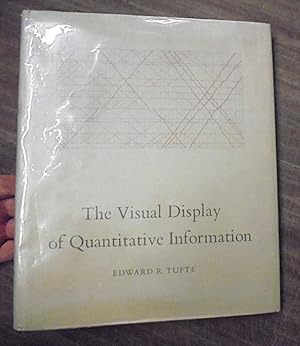

I found interesting the point made by the author about graphical data integrity, which means that graphics are supposed of telling the truth and not distort graphically the information content. Guidelines are given for producing better graphics, such as maximising data ink and erasing non data one, and many examples of good and bad graphics taken from present and past scientific literature following such guidelines are shown. The focus is set on how to maximize the information shown without producing chartjunk, in order to reveal the meaning and the complexity of the data in a visually effective way. This book provides suggestions and ideas about how to represent data in a graphically meaningful and elegant way. Just don't take his word for it that it's a guaranteed win. Perhaps even, after all, you really should remove them. Perhaps you shouldn't, or perhaps you should just make them lighter. So when he tells you that you should get rid of gridlines on a graph or in a table, consider whether it's really a good idea. But make sure you bear in mind that everything he says is based on a flawed principle. Go ahead and read what has Tufte has to say, since it too is worth reflecting on.

In conclusion: Ok, I exaggerate when say "do not read it". Some of them are effective, some are not. Why should you buy this book if not to read it? Because it is filled with pictures representing data from a myriad of sources. But Tufte HATES putting boxes around things! After all, you've certainly added more ink, and added no more information, so by his flawed rule you have made things unambiguously worse. A very small amount of effort, admittedly, but you've made it harder for no reason. If you leave out the bounding boxes then they become a jumble of tiny objects that take some effort to group visually. For example, if you have several graphs next to each other, then putting a box around each will keep them visually distinct, so you can focus on one at a time with no conscious effort. Instead we see the various shapes they form (search the web for "Kanizsa's triangle"!), and we should be aiming to reduce the complexity of this. We don't just see individual blobs of inks (or darkened pixels), so that adding more makes it harder. The problem with this idea is that it is based on a fundamentally flawed view of human perception. Why add more stuff to your graph if it doesn't add any more information? It will only confuse the reader for no benefit. It would not just improve your graphs (and similar diagrams), but do it in a fairly systematic way. Now as a scientist myself, this sounded like a great idea. The problem is, most of it is founded on a single principle: maximise the information-to-ink ratio. First let me look at the bad part: the text Tufte has written. Recently published, this new edition provides excellent color reproductions of the many graphics of William Playfair, adds color to other images, and includes all the changes and corrections accumulated during 17 printings of the first edition.This book has good and bad aspects. This is the second edition of The Visual Display of Quantitative Information. Detection of graphical deception: design variation vs. Time-series, relational graphics, data maps, multivariate designs.

Design of the high-resolution displays, small multiples. Theory and practice in the design of data graphics, 250 illustrations of the best (and a few of the worst) statistical graphics, with detailed analysis of how to display data for precise, effective, quick analysis. The classic book on statistical graphics, charts, tables.


 0 kommentar(er)
0 kommentar(er)
